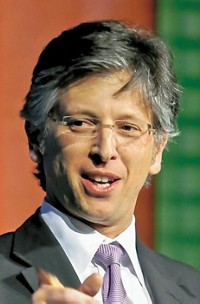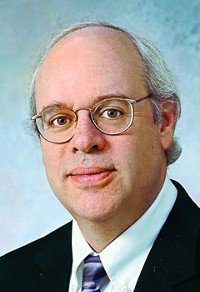Advertisement
Grab your lab coat. Let's get started
Welcome!
Welcome!
Create an account below to get 6 C&EN articles per month, receive newsletters and more - all free.
It seems this is your first time logging in online. Please enter the following information to continue.
As an ACS member you automatically get access to this site. All we need is few more details to create your reading experience.
Not you? Sign in with a different account.
Not you? Sign in with a different account.
ERROR 1
ERROR 1
ERROR 2
ERROR 2
ERROR 2
ERROR 2
ERROR 2
Password and Confirm password must match.
If you have an ACS member number, please enter it here so we can link this account to your membership. (optional)
ERROR 2
ACS values your privacy. By submitting your information, you are gaining access to C&EN and subscribing to our weekly newsletter. We use the information you provide to make your reading experience better, and we will never sell your data to third party members.
People
Joel Henry Hildebrand Award in the Theoretical & Experimental Chemistry of Liquids
February 13, 2006
| A version of this story appeared in
Volume 84, Issue 7

Sponsored by ExxonMobil Research & Engineering and ExxonMobil Chemical
The importance of lasers in revealing what goes on in the picosecond and femtosecond world of molecular interactions can't be overstated. Kenneth B. Eisenthal, Mark Hyman Professor of Chemistry at Columbia University, has made a particular mark on the field through his decades of work examining equilibrium and ultrafast processes in bulk liquids and liquid boundaries with gases, solids, and between immiscible liquids.
"His studies contributed in a major way to our understanding of liquid interfaces," says Jiri Jonas, emeritus chemistry professor at the University of Illinois, Champaign-Urbana.
A hallmark contribution was his demonstration that second harmonic and sum frequency generation from the surface of centrosymmetric nano-micro particles is allowed, contrary to the generally held belief. This advance provides a powerful new spectroscopic method to selectively probe the surface of small particles. This has yielded information such as surface charge-transfer spectra, electrostatic potential, real-time motion of molecules crossing an aqueous biomimetic surface, the effects of antibiotics on the crossing dynamics, and molecular exchange between particles.
"That one person has had such an impact on advancing the experimental and conceptual scope of picosecond and femtosecond dynamics in bulk liquids, as well as our understanding of adsorption, structure, thermodynamics, and dynamics at liquid interfaces, is truly remarkable," says Gabor Somorjai, chemistry professor at the University of California, Berkeley.
Eisenthal received a bachelor's degree in chemistry at Brooklyn College. He then went to Harvard, where he received a master's in physics and a Ph.D. in chemical physics.
After a two-year postdoctoral fellowship at the University of California, Los Angeles, Eisenthal worked as a research scientist at Aerospace Corp. in El Segundo, Calif., and as head of physical sciences at IBM in San Jose until 1975. He then returned to academia as a professor at Columbia, where he has been ever since.
Eisenthal has been on the editorial boards of Accounts of Chemical Research, Molecular Physics, Chemical Physics Letters, and ChemPhysChem. He is a member of the National Academy of Sciences. He won the Bryce Crawford Award in Molecular Spectroscopy and the ACS Arthur W. Adamson Award for Distinguished Service to Surface Chemistry.
The award address will be presented before the Division of Physical Chemistry and the Division of Colloid & Surface Chemistry.-Elizabeth Wilson




Join the conversation
Contact the reporter
Submit a Letter to the Editor for publication
Engage with us on Twitter